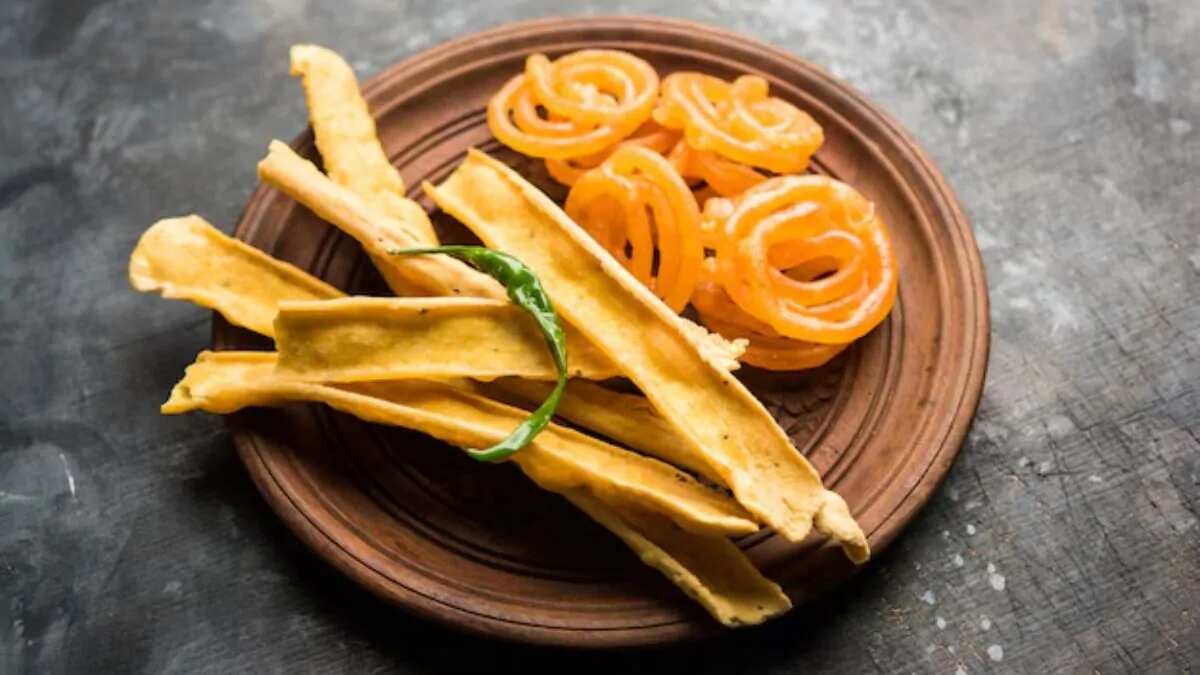
Dussehra or Vijayadashami will be observed on October 2, 2025. It is a festival that celebrates the victory of good over evil. Beyond the cultural celebrations, food also plays a significant role in displaying the true meaning of this festival. Across India, families prepare and share various traditional dishes that are believed to be auspicious, not only for their taste but for their symbolism of wealth, gratitude, and harmony. Many of these foods are deeply rooted in agricultural traditions, utilising seasonal harvests such as jaggery, gram, sugarcane, and lentils.
These foods display the value of simplicity and neighbourhood bonding that has been handed down through generations. Whether it is Puran Poli, Sundal, or the offering of sugarcane, each dish holds cultural meaning and connects to the land and its yield. These foods make the festival of Dussehra not just a spiritual one, but also a celebration of heritage and togetherness.
Puran Poli
Puran Poli is a classic dish prepared by stuffing jaggery and chana dal in a poori (flatbread). It is specifically prepared in Maharashtra and Karnataka during the Dussehra festivities. Its golden colour represents wealth and good fortune. Offering puran poli to loved ones exhibits the spirit of sharing abundance after the victory of good over evil. It connects people to the roots, as jaggery and lentils are harvest staples. Puran Poli is more than just festive food; it is a cultural expression of gratitude for nature’s reward.
Sundal
Sundal is a South Indian treat made with boiled chickpeas (chana) or green gram (moong ki daal) seasoned with coconut and spices. It is a staple offering during the Navratri and Dussehra festivals in many parts of the south belt. This dish is often distributed as prasad in many temples. High in nutritional value and easy to make, Sundal connects back to traditional diets that were based on legumes. Sharing Sundal illustrates the cultural value of community, displaying the importance of balanced, plant-based foods in our day-to-day life.
Gud-Chana
Eating gud and chana on Dussehra is a long-respected ritual in many parts of India. This combination also celebrates the harvest season and the idea that simple, natural foods can help in sustaining life. Sharing gud-chana reflects harmony and goodwill. This practice ties people to age-old traditions, emphasising that wealth is not only about money but also about sharing nourishing foods with our loved ones and caring about their health and well-being.
Kesari
Kesari, or saffron halwa, is a rich dessert prepared by combining semolina (suji or rava), sugar, ghee, and saffron. Its bright orange-gold shade indicates the auspiciousness of the festivity and the victory of light over darkness. Prepared particularly during Dussehra across South India, it is also offered as prasad in many temples. The dish connects families to their roots as it is a traditional recipe passed down through generations. Sharing Kesari during the festivities displays joy, love, and the cultural significance of sweets as a medium of spreading positivity.
Sugarcane And Seasonal Fruits
In many parts of India, sugarcane and seasonal fruits are thought to be auspicious foods during Dussehra. These fruits symbolise fertility, wealth, and the blessings of a good harvest. Offering these to the almighty and then distributing among loved ones symbolises the gratitude towards nature and its bounty. Sugarcane symbolises growth and stability, whereas fruits define health and abundance.
Fafda And Jalebi
Fafda and Jalebi are a festive favourite from Gujarat, traditionally prepared during Dussehra. Fafda, a crispy, golden snack, is savoury and goes perfectly with the sweet, syrupy Jalebi. When paired together, they create a contrasting flavour of sweet and savoury. As per tradition, eating Fafda and Jalebi on Dussehra marks the start of the harvest season and represents prosperity, joy, and celebration.